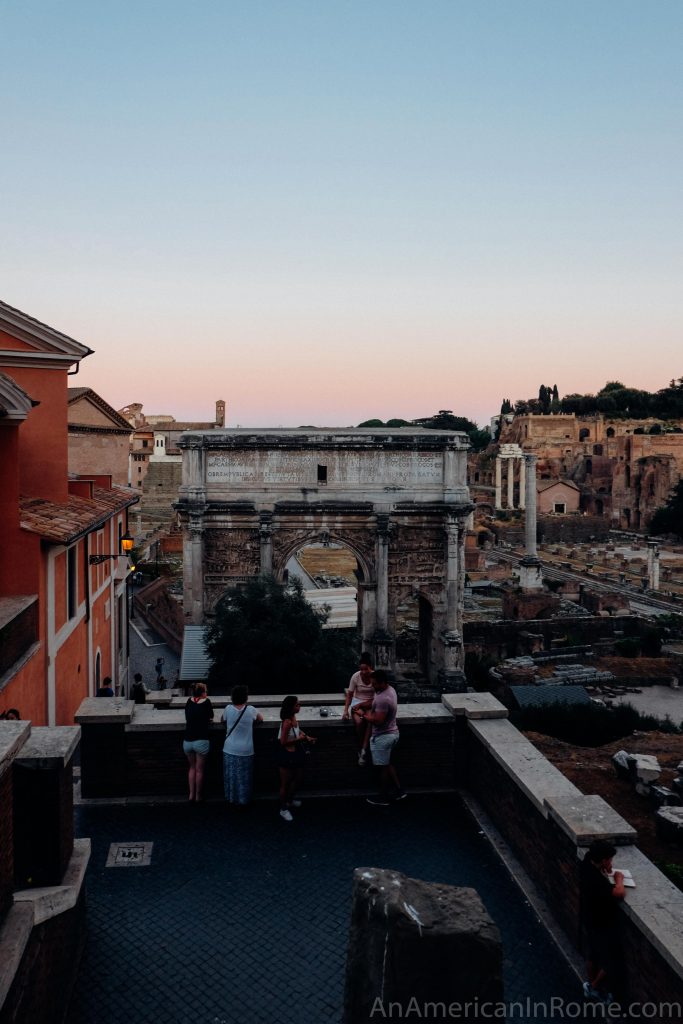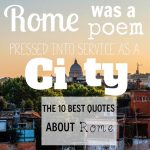When I tell people that I live in Rome, they usually blurt out the first saying that comes to mind. This is typically something like “Well! All roads lead to Rome” or, alternatively, “Ah, Rome. The Eternal City!” Having lived here quite a long time now, the point on all roads leading to Rome makes sense: we still drive on modernized versions of major thoroughfares that were first designed and built by the Ancient Romans. However, the idea that Rome is eternal has been harder to pinpoint. The notion of Rome as the Eternal City has become deeply ingrained in the city’s identity and is still used to describe Rome to this day. But.. why?

The term “Eternal City” (in Italian, “La Città Eterna”) to refer to Rome has been used for centuries and (like the roads) can be traced back to ancient times. However, the exact origin of the nickname is unknown. The phrase has been used by various poets, writers, and historians throughout history in an attempt capture the enduring essence of Rome’s legacy and its significant historical, cultural, and spiritual contributions.
Several writers and poets have referred to Rome as the Eternal City throughout history. A few examples include:
- Virgil: The Roman poet Virgil, in his epic poem “Aeneid” (29-19 BCE), describes Rome as “a city of everlasting destiny” and references its seemingly never-ending nature.
- Ovid: The Roman poet Ovid, in his work “Tristia” (8 CE), calls Rome the “Urbs Aeterna” (Eternal City) and emphasizes its everlasting presence.
- Lord Byron: The renowned English poet Lord Byron, in his poem “Childe Harold’s Pilgrimage” (1812-1818), refers to Rome as the “Eternal City” and portrays its grandeur and historical significance.
- Percy Bysshe Shelley: The English Romantic poet Percy Bysshe Shelley, in his poem “Adonais” (1821), refers to Rome as the “Eternal City” and explores themes of beauty and mortality. (Perhaps ironic then that he is buried in Rome’s Non-Catholic Cemetery).
- Henry Wadsworth Longfellow: The American poet Henry Wadsworth Longfellow, in his poem “The Bells of Rome” (1865), describes Rome as the “Eternal City” and captures its timeless charm and allure.
- Nathaniel Hawthorne: The American novelist Nathaniel Hawthorne, in his book “The Marble Faun” (1860), also refers to Rome as the “Eternal City” and delves into its historical and artistic richness.
- Robert Browning: The English poet Robert Browning, in his poem “The Bishop Orders His Tomb at Saint Praxed’s Church” (1845), mentions Rome as the “Eternal City” and evokes its enduring grandeur.
- Gabriele D’Annunzio: The Italian poet and writer Gabriele D’Annunzio, in his works such as “Roma Redenta” (1909), portrays Rome as the “Città Eterna” and delves into its historical and cultural significance.
But Rome is not only known as the Eternal City. Rome was (and is) also known as Caput Mundi – the capital of the world. I would say that some Romans still consider that to be true, even if the empire has long faded away.

“Caput Mundi” is a Latin phrase that translates to “Capital of the World” or “Head of the World.” The phrase reflects the perception that Rome, as the capital of the Roman Empire and later as a global center of power and influence, held a leading position in the ancient world.
During the height of the Roman Empire, Rome was considered the center of the civilized world. The phrase “Caput Mundi” captured the idea that Rome, with its vast empire and dominance, exerted control over a significant portion of the known world. The concept of Rome as the “Caput Mundi” also reflected the city’s central role in governance, administration, trade, and cultural exchange. It served as a melting pot of diverse peoples, ideas, and traditions from across the vast empire. Rome’s influence extended beyond its borders, shaping the political and cultural landscape of the ancient world.

So is Rome still Eternal? Or the center of the world? For me, Rome truly is the Eternal City, because it always manages to slowly reinvent itself, preserving its history while tiptoeing into contemporary cuisine, art and culture. Even its faded beauty is breathtaking – and if a city can age this gracefully, then it surely must be eternal.
Want to do some more reading? Here are the best books about Rome, and some inspiring Rome quotes.






Please recommend some good restaurants in Rome. Not too expensive …Smile